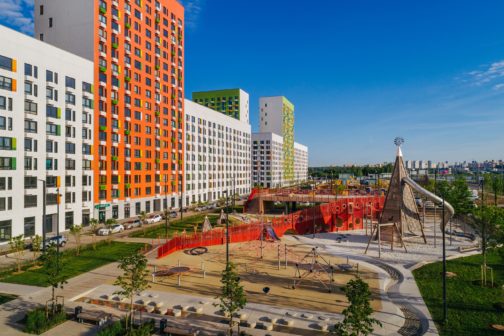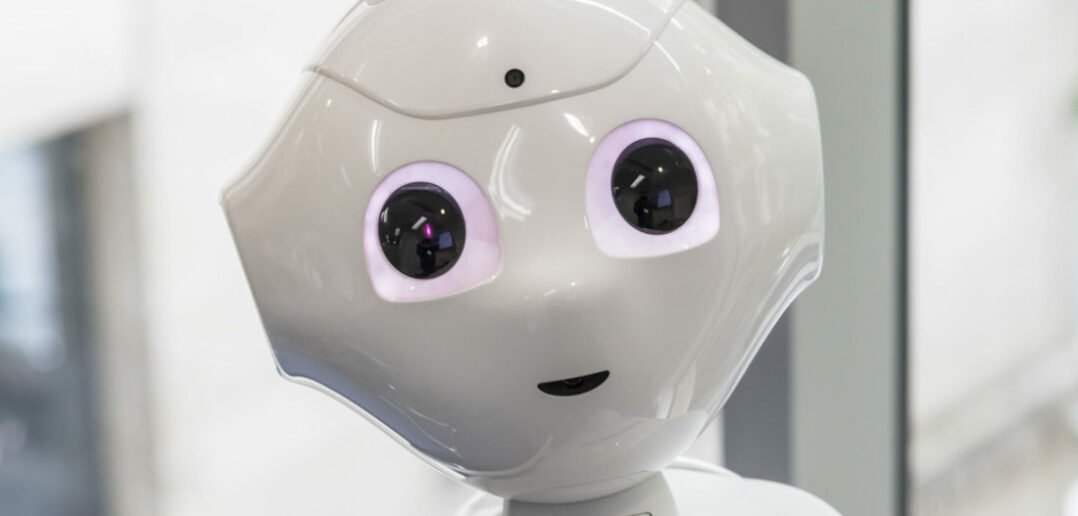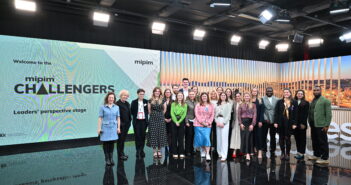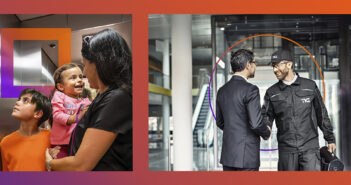This feature was written for the MIPIM Preview magazine in February 2020; and all comments relate to the market pre-coronavirus
By all accounts, Heidi, the new receptionist at state-of-the-art office One Hyde Park Hayes, near Heathrow Airport, has been settling in well. Heidi manages the visitor entry system, signs guests in and out, and communicates arrivals and departures to occupiers. Indeed, her arrival would scarcely be noteworthy if it wasn’t for the fact that Heidi (above) didn’t exist until a few months ago – and is not even human.
The voice-controlled robot, developed by tech firm Smart Spaces, is the perfect complement to the office of the future, according to David Soar, partner at property management and building consultancy firm Workman, which has been increasingly harnessing tech to finesse user experiences.
“We’re seeing healthy client demand for sophisticated technology solutions,” Soar notes.
“For example, we’ve commissioned a range of bespoke apps for individual business parks, offering services from energy consumption readings through to café loyalty cards and taxi bookings. Meanwhile, at One Hyde Park Hayes, the robot technology enhances efficiencies and provides a memorable and fully connected customer experience.”
Soar understands the irony of using robots to push people skills, but underlines its effectiveness. “Recognising that the future is indeed human, the most important thing with the successful application of any new technology is that it should not be tech for tech’s sake. It needs to be human enabled – to put people first – and appropriate, delivering real added value to the people who use it,” he says.
Office applications
Workman is part of a significant movement exploiting the potential of proptech to make buildings more liveable. For example, AXA IM – Real Assets’ flagship London development, 22 Bishopsgate, will use technology in a number of ways to improve the occupier experience. Occupiers will be able to use a single app to pre-order food from the building’s central food hall and book a number of on-site services ranging from meeting rooms to spa slots.
The building also promises an opt-in facial recognition system, and its building management is designed to collect over 1 million data points per day, on temperature, air, light, water and the flow of people to feed into its fault detection and diagnosis system, increasing energy efficiency and lowering operational costs.
Other firms, such as start-up HqO, backed-by JLL Technologies, look beyond the individual building to create better connected portfolios. HqO is focusing on an interoperable tenant experience platform that can connect disparate systems in order to create what it describes as “a seamless user experience for tenants”, while forging a unified reporting and intelligence service to help landlords reshape the future of their portfolios. “The HqO team understands that software is a key layer in the way people experience physical space, and consequently, will play a huge role in how commercial real estate can attract and retain the most innovative, high-growth tenants,” says Mihir Shah, co-CEO at JLL Technologies.
Customer-centric
Of course, the application of these kinds of customer-centric strategies also go far beyond the office. Room2, the UK’s first hometel brand, seeks to combine the best elements from Airbnb, serviced apartments and boutique hotels, using technology to reduce points of friction felt by guests. This includes keyless entry – where personal mobile phones gain door-unlocking capabilities – as well as managing regular communication between guests and duty managers via WhatsApp.

Meanwhile PIK, Russia’s largest residential developer with a market capitalisation of over $3.5bn, says it has learned from flatpack specialists Ikea to combine tech with the endless possibilities of modular housing. The company has more than 200 software developers working in house and 2,000 in house architects that use its software to plan, design and develop residential communities, including the manufacture of its own pre-fab modular buildings and fixtures and fittings including windows, plumbing, bathroom pods, heating and cooling systems, furniture, doors and lifts.
“Our 2000+ in-house architects work not only to deliver residential units but to optimise our entire neighbourhoods around green space, play areas, retail and education facilities that help bring the places people live to life,” explains Yuri Ilyin, vice president of capital markets and corporate finance at PIK Group.
“We have an important role to play in making people’s lives better by providing community amenities such as food delivery, property maintenance, rental services or even a laundry as standard.”
In many ways, residential property offers the most seamless possibilities for personalisation, according to Sanjaya Ranasinghe, technical director of building certification specialist WiredScore.
“The build-to-rent asset class is one that rapidly can, and is, embracing UX-focused design,” he notes.
“Firstly, this is because landlord/operators have complete responsibility to deliver a new level of service in terms of amenities, brand and community. In addition to this, consumer technology has been through a UX revolution in the past few years with the rise of the voice-led interactions via Amazon Echo and Google Home ecosystems,” he notes.
Improved connectivity between residential buildings and their inhabitants is already becoming more commonplace as developers seek to make their properties future-proof. In Berlin, Drees & Sommer is helping to deliver a brand-new city district, the Quartier Heidestrasse, where an array of sensors shares data between buildings and those who reside within them. This enables residents to benefit from a pool of shared cars and bicycles, with automated processes keeping them informed of where and when the vehicles are available. Marco Abdallah, Drees & Sommer’s head of engineering, says: “Digitisation is fast-becoming an integral part of how we interact with buildings – and investing in it now safeguards value later on.”

Indeed, the greatest risk for developers who avoid tech solutions is that of being left behind, warns Niall Gaffney, CEO of Irish office specialist IPUT (above).
“Leading research reports have suggested that the real estate industry is seen as one of the most heavily under-digitised sectors and is possibly five years behind in its adoption of technology innovation and data collection,” he notes.
“This has certainly been the case when it comes to the pace of building owners embracing technology that enables them to put users at the heart of buildings.
“However, the recent rise of flexible office space operators and their need for more operational data has helped accelerate a shift in the thinking of building owners. Enlightened owners are increasingly realising the value of focusing on the user experience.”
This in turn has affected how real estate firms internally structure their responsibilities towards end-users, as their tech capabilities grow.
“This shift has led to new roles within the real estate sector such as chief technology officers, chief experience officers,” Gaffney explains.
“Data scientists are now being hired to identify the technology opportunities that can help building owners enable the personalisation required by occupiers within their buildings.”
Ultimately, this understanding has created a new, important equilibrium in the landlord-tenant relationship, Gaffney affirms. “Technology has enabled the relationship between owners and occupiers to be more intertwined, with owners now in a better position to provide more added-value to occupiers, providing data that will help support their business goals and deepen the owner-user relationship,” he says. “And that can only be a good thing.”



